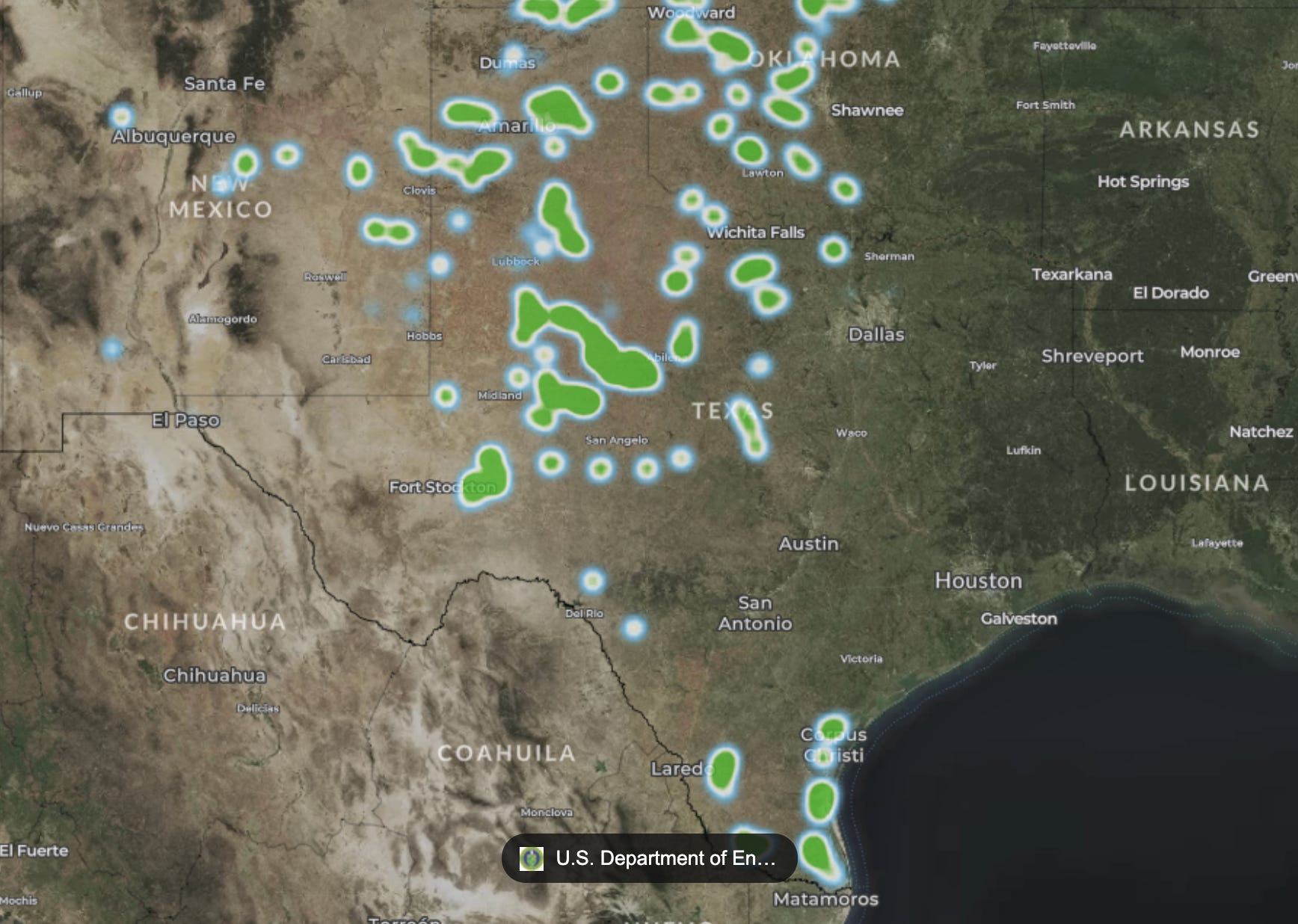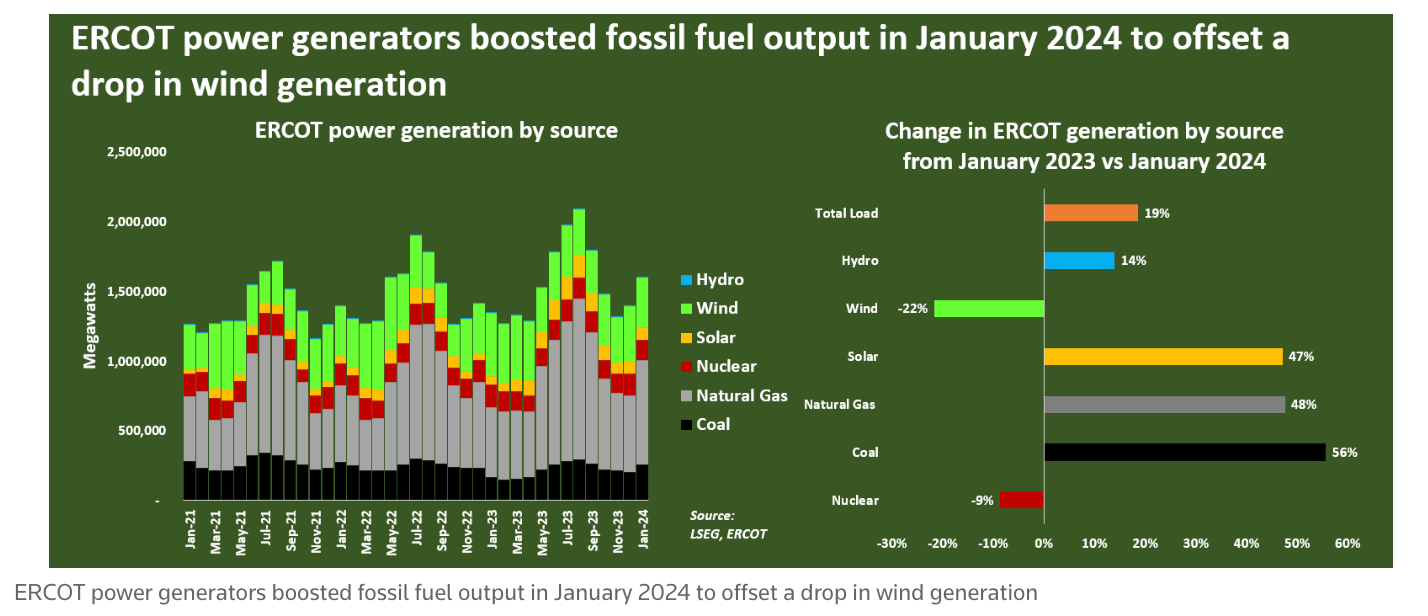Wind power output in Texas is trending down even as wind generation capacity increases
By Ed Ireland -- February 16, 2024The inherent unreliability of wind power is highlighted by the recent experience in Texas.
I have written extensively about the intermittent nature of wind power (here, here, and here), highlighting that the only way wind power has survived and continues to increase is through federal tax subsidies. Wind proponents have long argued that the intermittent nature of wind is offset by over-building wind generation, based on the theory that the wind is always blowing somewhere.
The reality that the wind is not always blowing where it is needed, even over very large areas, is highlighted by the fact that wind power in Texas has been declining.
Total wind power generation in January 2024 was less than in January 2023. According to Reuters in an article published on February 16, 2024:
Cumulative wind power output in 2023 was 4,500,000 MWh, compared to 4,400,000 MWh in 2022, LSEG data shows. That 2.4% climb in annual wind output is less than the roughly 3% rise in wind generation capacity within the system in 2023, according to ERCOT. Unusually low wind speeds were the main cause of the stunted growth, with output in April, May and June all falling sharply from the prior year totals.
Adding insult to injury, this decline in wind power occurred even as total wind generation capacity increased by a staggering 28% from 356,000 megawatts (MW) to 455,000 MW in January 2023, according to data from the Electric Reliability Council of Texas (ERCOT).
So much for the fallacy that the wind is constantly blowing somewhere. Wind farms in Texas cover thousands of square miles of south Texas, West Texas, and the Texas Panhandle, and, yet total wind power generation declined year-over-year:
Source: U.S. Department of Energy
As is always the case on all U.S. power grids, natural gas came to the rescue to offset the decline in wind power:
As Reuters reported:
Combined output from natural gas and coal was close to 50% greater in January 2024 than in January 2023, underscoring the enduring importance of fossil fuels within the ERCOT system despite the ongoing build-out of renewable generation capacity.
Even Reuters, a champion of so-called “renewable energy,” was forced to admit:
The drop in Texas wind output in January from a year ago follows a disappointing wind generation total for 2023 as a whole, and suggests that even with steep increases in wind generation capacity the ERCOT system may remain unable to rely on wind to supply a steady share of Texas’ power needs (emphasis added).
My Take: The importance of Reuters’ admission that wind power is unreliable is notable. The North American Electricity Reliability Council, NERC, has been sounding the alarm for years that the massive amounts of wind and solar power generation added to all U.S. power grids are destroying the reliability of those grids, putting the U.S. on a collision course with disaster.
This epic failure of wind power in Texas should be the “canary in the coal mine,” so to speak, that the U.S. has already added too much unreliable wind power to the electricity grids, and the first step toward halting more of this insanity is to repeal the Production Tax Credit, PTC. The PTC is the driving force behind the massive misallocation of resources that will perpetuate the overbuilding of wind power in perpetuity thanks to the inaptly misnamed Inflation Reduction Act.
A political wrecking ball is the only thing that can stop this madness.
—————-
This post originally appeared at Thoughts About Energy and Economics and is reposted with permission.


